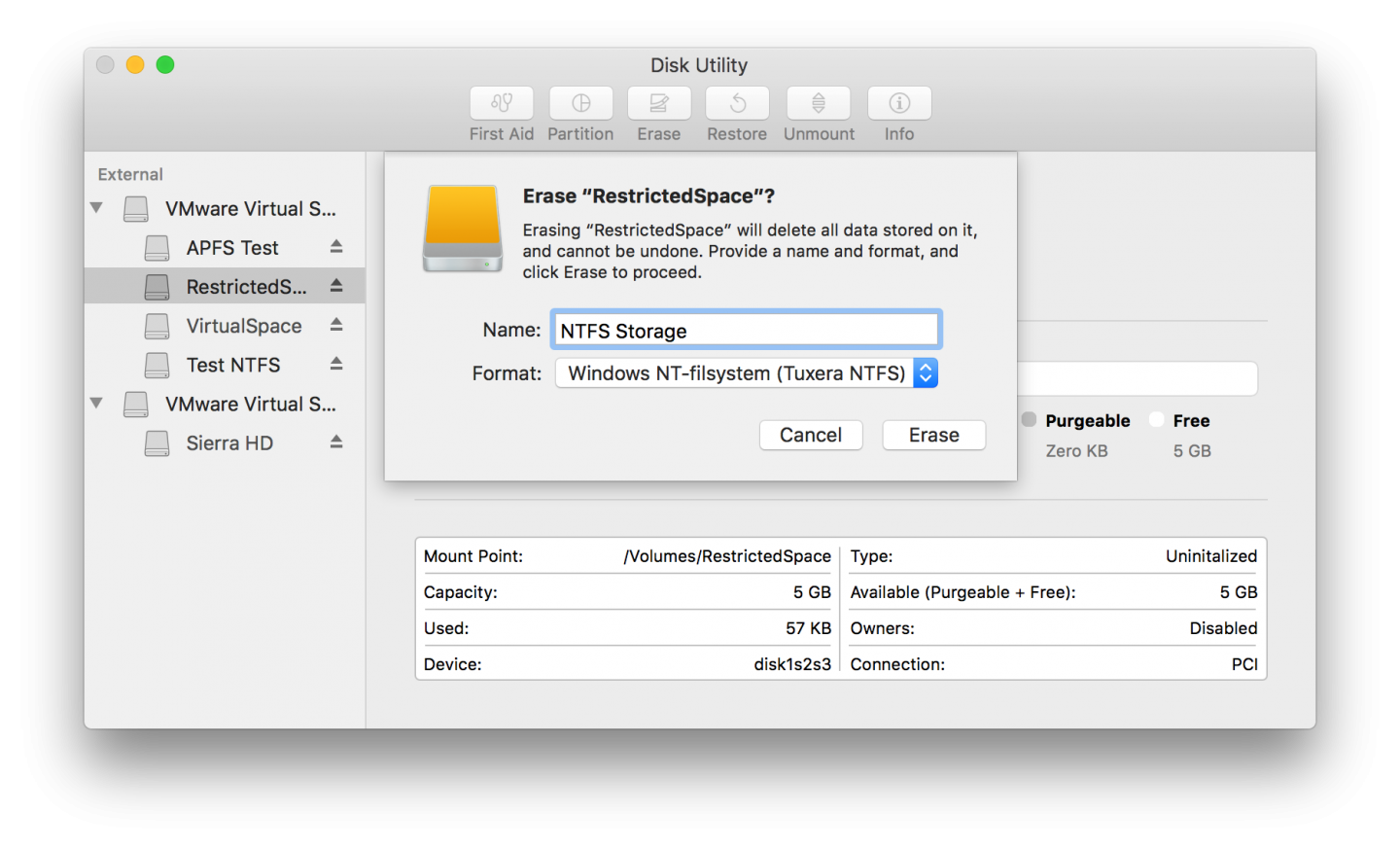
Press Control + O to save, followed by Return.Paragon NTFS Crack + Mac (Torrent) Latest 2020. Type your admin password and press Return when prompted.Įnter the following command, replacing NAME with your external volume title: LABEL=NAME none ntfs rw,auto,nobrowse Launch Terminal with the NTFS drive connected to your Mac.Įnter the following command and press Return: sudo nano /etc/fstab If you understand the risks and wish to enable NTFS write mode in macOS, you can do so by following these steps: Therefore, you should proceed with caution. In this case, enabling a setting that affects disk write capabilities has the potential to corrupt hard drives and cause data loss. Whenever you make any significant changes to your system, you should always back up important information first. The feature is somewhat experimental-or, at the very least, unsupported by Apple-so the results can be unpredictable.

To enable the tool, you’ll need to use Terminal, and you do so at your own risk. Interestingly, macOS does have the ability to write to NTFS, but Apple disables the feature by default. Therefore, in most cases, ExFAT is the superior choice. While either FAT format will work, FAT32 has several limitations, including a 4GB file size limit. Once you’ve switched to a cross-compatible format, you’ll be able to read and write to your external disk in both operating systems. If your NTFS drive doesn’t contain any important data, formatting to FAT32 or ExFAT is the simplest solution for sharing files between macOS and Windows. Format an NTFS Drive to FAT32 or ExFAT on Mac

Let’s discuss how you can read and write to an NTFS drive in macOS.ġ. Therefore, you’ll need to use a workaround if you want your external disk to play well with both operating systems. While your Mac can read NTFS drives-you can view contents and copy files-it stops short of being able to write. If you ever need to use an external disk with both a Mac and a Windows PC, you could encounter compatibility issues if you haven’t configured the drive correctly.

NTFS drive format may be standard for the Windows operating system, but macOS refuses to write to it.


 0 kommentar(er)
0 kommentar(er)
